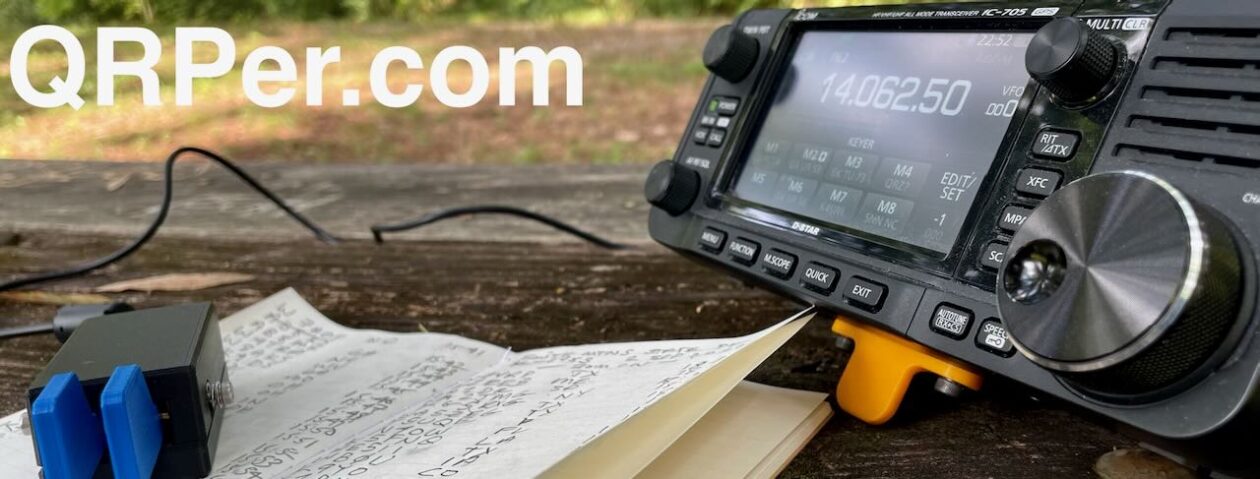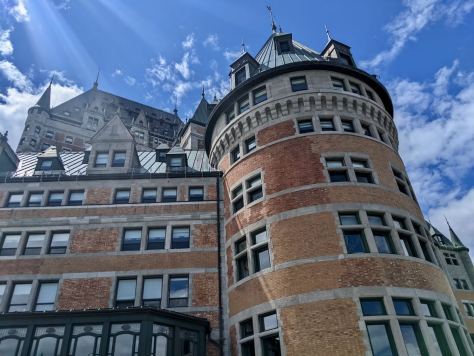 On July 4, 2022, I plotted a little multiple park POTA run that included four parks all clustered in the Sainte-Foy region of Québec City.
On July 4, 2022, I plotted a little multiple park POTA run that included four parks all clustered in the Sainte-Foy region of Québec City.
The first park I activated that day was Parc de la Plage-Jacques-Cartier (VE-0970)–click here to check out my full field report and activation video. I managed to complete that activation in record time, during poor band conditions with the Elecraft AX1 antenna. In short? It was a blast!
I knew, however, that band conditions would likely only deteriorate that day and each subsequent activation could become more difficult to complete (spoiler alert: it did).
I scheduled Parc Cartier-Roberval (VE-0964) to be the second park of the day and was prepared to slog it out, but fortunately, the bands had not collapsed yet and this activation had a few surprises in store!
Parc Cartier-Roberval (VE-0964)
 This park practically adjoins the previous park I activated. Indeed, if I had the time in my schedule (I did not) I would have walked the St. Lawrence river trail to Parc Cartier-Roberval.
This park practically adjoins the previous park I activated. Indeed, if I had the time in my schedule (I did not) I would have walked the St. Lawrence river trail to Parc Cartier-Roberval.
My family actually visited Parc Cartier-Roberval the previous week while in the Sainte-Foy area.
The park is chock-full of history as it is also associated with an archaeological site exploring the first French colonists to arrive in America by Jacques Cartier and Jean-François de La Rocque de Roberval from 1541 to 1543.
There are some beautiful and informative displays on the west side of the park, near the railroad tracks.
There’s also a beautiful, immersive display that ends with a stunning overlook.
 I could have spent all day soaking in the history.
I could have spent all day soaking in the history.
The suspended glass encasement containing figurines of the first colonists is not to be missed.

And, again, the views from the overlook are most impressive!
Since I was on a schedule, I left the overlook and walked to the eastern part of the park.

 When I visited the park the previous week, I had no time to perform an activation–in fact, we were in the Sainte-Foy area to visit a CLSC (regional medical center) and didn’t want to miss our appointment time.
When I visited the park the previous week, I had no time to perform an activation–in fact, we were in the Sainte-Foy area to visit a CLSC (regional medical center) and didn’t want to miss our appointment time.
Side note: Why were we visiting a CLSC the previous week? My wife cut her finger a few days prior; it was severe enough to require a visit to the hospital and six stitches. Our CLSC visit was to have a nurse check out her finger and change the bandage. The medical care we got was first class–within a week (two days after this activation) the stitches were removed and we were given the green light to do some camping up the north coast of the St. Lawrence. She had to change her bandages frequently for a full month, but looking at her finger now, you’d never know she’d cut it. Turns out, Québec is a great place to have a medical emergency!
But back to the activation…
Continue reading QRP DX! Pairing the Elecraft KX2 & Tufteln Random Wire at Parc Cartier-Roberval.

































